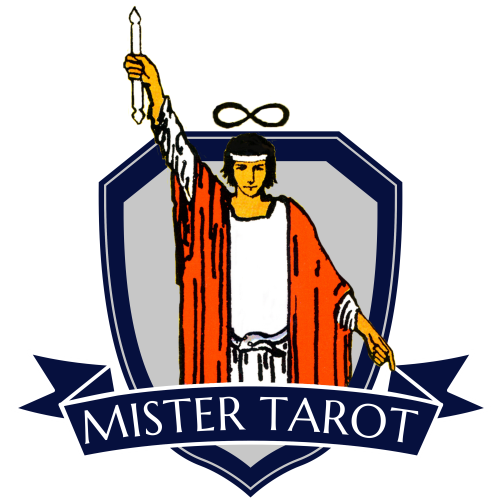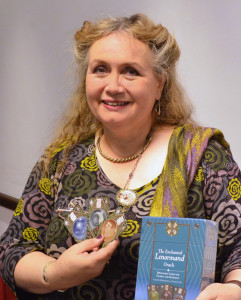When I was learning about Tarot from books in the 1980s, it was standard practice to choose a ‘significator’ card, which represented the querent. This card was placed upon the table, and other cards for the reading were placed over that card, covering it completely! I was never a fan of this practice, and I soon decided to ignore that rule. It didn’t make sense to me. But at a recent Tarot conference, Caitlin Matthews ran a workshop called “Rejoicing in the Significators” which promoted an innovative approach to this concept. I was intrigued, so I made sure I went along.
One of the ideas suggested at this workshop was that a significator doesn’t have to be consciously chosen. Caitlin suggested choosing one ‘by chance’ to see what comes out to represent you or the client/querent. In the workshop we were shown quite a few novel options for using the significator, and we experimented with these ideas in a few spreads in the workshop.
This workshop was inventive and practical. It showed me a new way of reading Tarot that made use of the significator in an active manner, rather than as passive witness to the spread. She drew upon some traditional, but forgotten techniques of card reading that opened the doors of possibilities for a different approach to Tarot…and that’s exactly what you want from a teacher.
At the UK Tarot Conference I talked to Caitlin Matthews about that workshop on significators, then we discussed the rise of interest in the Lenormand Oracle within the Tarot community, and the future of Tarot in general…
Mister Tarot: On a personal level, what do you think are the advantages and disadvantages of using a significator in a reading?
Caitlin Matthews: Well, I don’t like the passive significator which you just choose and it sits on the table and then you put some cards around it…I much prefer that it dances into the deck and then dances out with some friends. And what falls next to them is always very significant! If you’re reading by old methods of juxtaposition, you really do need to have a significator, but modern Tarot has relegated it to a negative, passive place where it’s not doing anything.
Mister Tarot: There has been big interest in the Lenormand Oracle at recent conferences. It seems to have come out of nowhere and become a major focus of Tarot readers. What do you think will be the next big thing to interest the Tarot scene?
Caitlin Matthews: I don’t think we’re done with Lenormand as yet. It’s a 200 year old oracle whose history is still being discovered…but what I personally would like to see is a collection from many hands and from many different European countries…there’s so much more history to be discovered…and some of it is perilously close to being lost…
Mister Tarot: Do you mean that some of the history of divination is likely to be lost?
Caitlin Matthews: Yes, divination in general. I would love to see small Piquet card oracles being better researched and put together. It would be lovely if all the researchers would sit down together…I’d love to edit a collection like that…unfortunately a lot of people just want to be the first at the trough and to find what they find, but it’s so much nicer when people talk to each other.
Mister Tarot: So, oracle cards are likely to be popular still?
Caitlin Matthews: I think oracles and oracle cards are here to stay. But we want oracles that take us deep, not just the surface ones.
Mister Tarot: Where do you think Tarot is heading from this point in time?
Caitlin Matthews: There are an infinite number of ways that it can go. I hope that the old oracular ways of speaking divination will come back up again. Personally, when I’m not reading cards, I’m actually reading from nature. That sense of getting omens from nature is a traditional skill that I’d like to see more of. Also, I hope that air-brushy, very photographic Tarot does not take over…I want real art…I love real art…that’s my personal wish for Tarot. I hope that real art still remains alive and vigorous.
Mister Tarot: What do you mean by real art?
Caitlin Matthews: Real art that is done by hand, as opposed to being done on the computer. I know that there’s a lot of photographic collage-style of Tarot being done at the moment, but they don’t do a lot for me.
Caitlin Matthews is a prolific author of more than 60 books and hundreds of magazine articles exploring, myth, divination, and the Western Mysteries.

